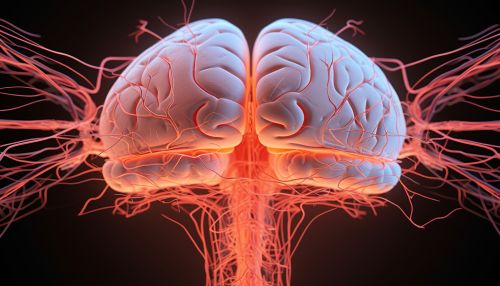Autonomic Nervous System
Overview
The autonomic nervous system (ANS) is a component of the peripheral nervous system that regulates involuntary physiologic processes including heart rate, blood pressure, respiration, digestion, and sexual arousal. It is composed of two main branches: the sympathetic nervous system (SNS) and the parasympathetic nervous system (PNS).


Structure
The ANS is a complex system of nerves and ganglia that controls involuntary functions of the body. It is divided into two main subsystems: the sympathetic nervous system (SNS) and the parasympathetic nervous system (PNS). These two subsystems often have opposing effects where one system activates a physiological response and the other inhibits it.
Sympathetic Nervous System
The SNS is often considered the "fight or flight" system, as it is responsible for the body's response to stressful situations. It is responsible for increasing heart rate, blood pressure, and blood glucose levels while decreasing digestive activity.
Parasympathetic Nervous System
The PNS, on the other hand, is often referred to as the "rest and digest" system. It promotes calming of the body along with enhancing digestion. It is responsible for decreasing heart rate, blood pressure, and blood glucose levels while increasing digestive activity.
Function
The primary role of the ANS is to maintain homeostasis in the body. It does this by constantly monitoring the internal environment through a variety of sensory receptors and responding appropriately to any changes.
Regulation of Heart Rate and Blood Pressure
The ANS plays a crucial role in the regulation of heart rate and blood pressure. The SNS increases heart rate and contractility, thereby increasing cardiac output and blood pressure. Conversely, the PNS decreases heart rate and contractility, thereby decreasing cardiac output and blood pressure.
Regulation of Respiratory Rate
The ANS also regulates the respiratory rate. The SNS increases the respiratory rate, while the PNS decreases it.
Regulation of Digestion
The ANS regulates the process of digestion by controlling the movement of food through the digestive tract and the secretion of digestive enzymes. The SNS inhibits these processes, while the PNS promotes them.
Clinical Significance
Dysfunction of the ANS can lead to a variety of clinical conditions, including hypertension, heart failure, and diabetes. Understanding the role of the ANS in these conditions can help in the development of effective treatments.
